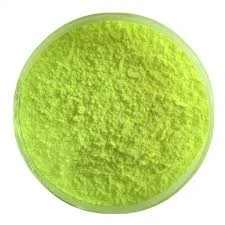Chemical Treatment of Drinking Water
Access to clean and safe drinking water is a fundamental human right and essential for maintaining public health. However, the natural sources of water can often be contaminated with various pollutants, including microorganisms, heavy metals, and organic compounds. Among the methods used to purify drinking water, chemical treatment plays a crucial role in ensuring the safety and quality of the water we consume.
Chemical treatment refers to the application of various chemical agents to remove impurities and disinfect water. This process can be broken down into several key stages, each employing specific chemicals based on the type of contaminants present. The primary goals of chemical treatment are to eliminate pathogens, remove sediments and suspended solids, and reduce chemical pollution to acceptable levels.
One of the most common chemical treatments used in drinking water purification is the addition of coagulants. Coagulation involves the aggregation of suspended particles, which are then removed through sedimentation or filtration. Aluminum sulfate, commonly known as alum, is a widely used coagulant. It works by neutralizing the negative charges on particles, allowing them to clump together and settle. This process not only removes sediments but also reduces the surface tension of water and aids in the removal of dissolved organic matter.
After coagulation, disinfection is the next critical step in the chemical treatment process. The primary goal of disinfection is to kill or inactivate harmful microorganisms that can cause waterborne diseases. Chlorine is the most traditional and widely used disinfectant. When added to water, it works effectively against bacteria, viruses, and protozoa. However, the use of chlorine can lead to the formation of disinfection by-products (DBPs), which may pose health risks. As a result, alternative disinfectants are gaining popularity, such as ozone and ultraviolet (UV) light. Ozone is a powerful oxidizing agent that can eliminate a broad range of contaminants without leaving harmful residues, while UV light destroys microorganisms by disrupting their DNA.
chemical treatment of drinking water

Another important chemical process is the adjustment of pH levels. Water that is too acidic or alkaline can lead to corrosion of pipes and fixtures, potentially introducing metals like lead and copper into the water supply. The addition of substances like lime or sodium carbonate is often utilized to stabilize the pH level, ensuring the water is not only safe for consumption but also minimizes the risk of leaching harmful substances from plumbing systems.
In recent years, the chemical treatment of drinking water has also focused on removing specific pollutants, including heavy metals and synthetic organic chemicals. Advanced techniques such as activated carbon treatment and ion exchange are employed to address these contaminants effectively. Activated carbon, for instance, is particularly effective at adsorbing organic compounds and chlorine, enhancing both taste and odor of the water. On the other hand, ion exchange processes can effectively remove heavy metals, such as lead and arsenic, by exchanging them with harmless ions.
While chemical treatment is essential for ensuring water quality, it is not without its challenges. The balance between effective treatment and safety must be carefully managed. Over-reliance on chemicals can lead to environmental degradation and health concerns, prompting regulatory bodies to keep stringent checks on the levels of chemical residues in drinking water. Furthermore, the cost of chemical treatments can also be significant, particularly for smaller water treatment facilities.
In conclusion, the chemical treatment of drinking water is a vital process that safeguards public health by ensuring access to safe and potable water. As technology advances and new contaminants emerge, it will be essential to continue developing and optimizing chemical treatments. By investing in research and infrastructure, we can enhance the effectiveness of these processes, protect our water resources, and ultimately secure healthier communities. The challenge ahead is to maintain a balance that ensures both the efficacy of chemical treatments and the safety of drinking water for all.

